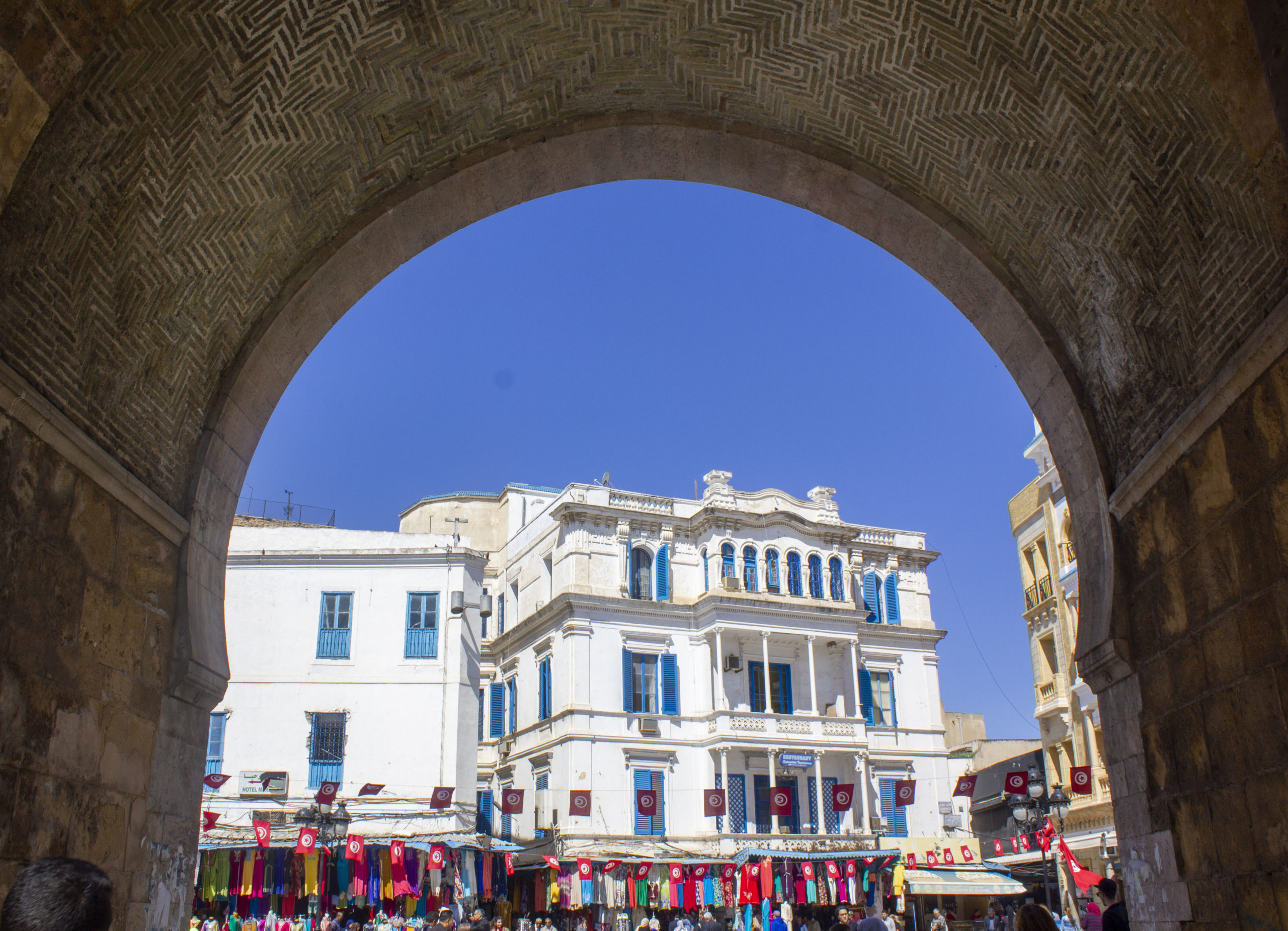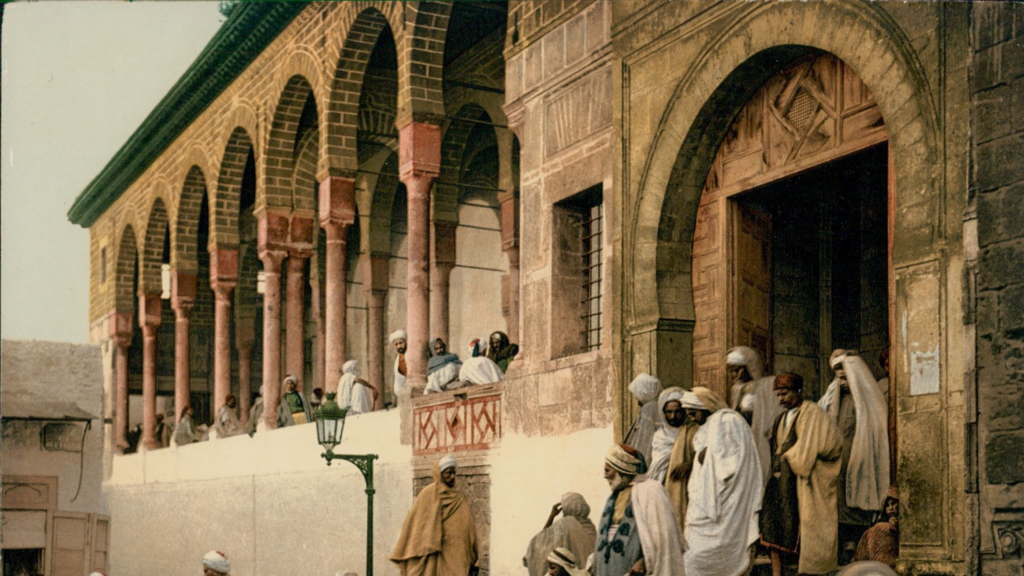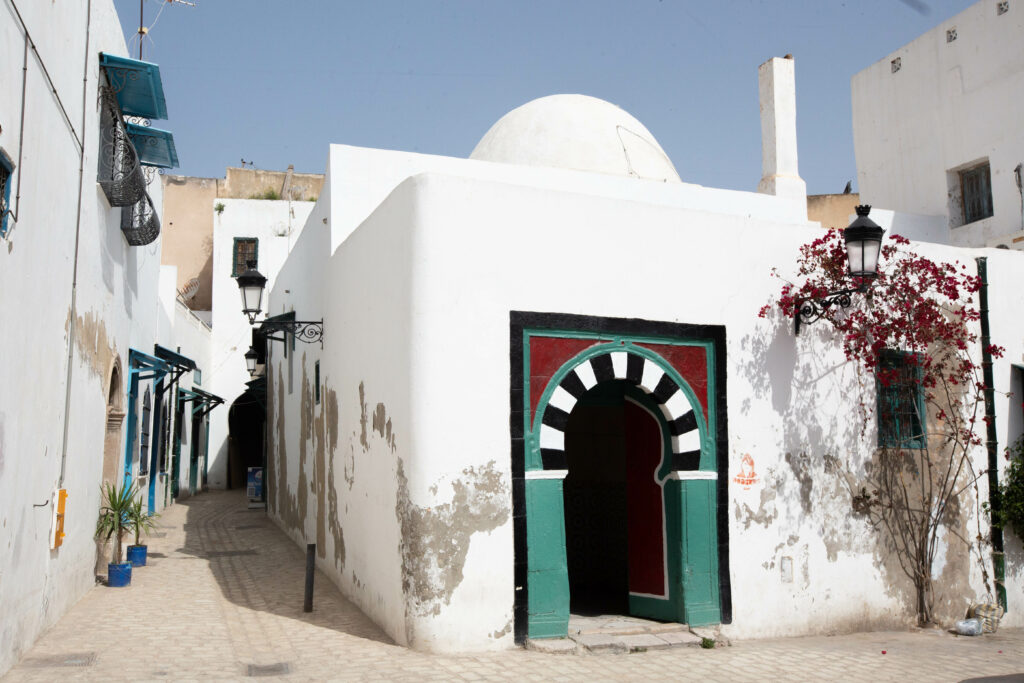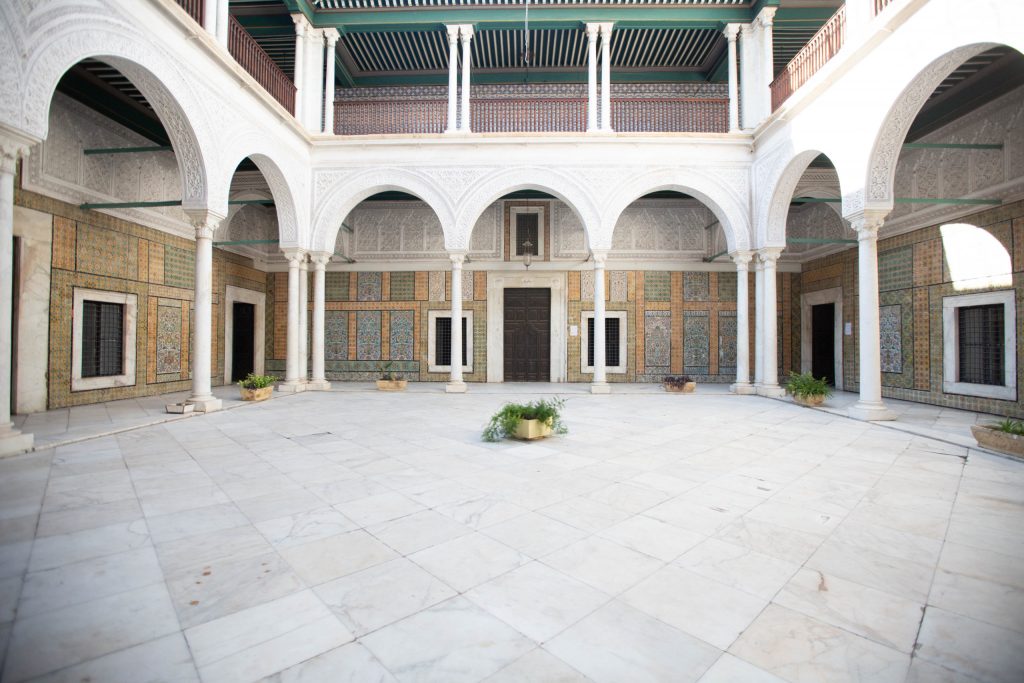
The gates of the Medina

The gates
of the Medina of Tunis
At the time of the establishment of the Arab conquerors, Tunis was founded to play the role of a post-military front. Tunis was then a fortified city, a Medina (city in Arabic) surrounded by ramparts. When the Umayyad governor Hassan Ibn Numan settled in this small perched village in 698, and to build the walls, the city housed a garrison and a fleet. This initial role was soon extended, and they transformed the original facilities to accommodate the commercial, political, economic and cultural growth of the city.
The gates played an essential role in a Medina. They allowed the circulation of goods and people and were closed at night to ensure security. It is thus quite natural that the Medina of Tunis sheltered several and new ones each time the economic or political situation required it. Not only doors were opened, but ramparts were built too.
Indeed, with the development of Tunis, two suburbs were built and expanded outside the first ramparts, towards Bab El Jazira (to the south) and towards Bab Souika (to the north). The construction of a second enclosure was then ordered, encompassing the Medina and its two new districts.
Over the time and through the expansion of the city, redevelopments had to be made to meet its infrastructure and road needs. Thus, today, of its double fortified ramparts, only a small part of the outer enclosure remains and of its 17 gates (7 interior and 10 exterior) only 4 still exist: Bab Bhar and Bab Jdid at the level of what was the inner enclosure and Bab El Khadhra and Bab Saadoun, of the outer enclosure. Of the others, only the name remained to designate certain districts.
Bab Bhar
It was so named because it is located on the side of the lake of Tunis and the sea. Later, the Europeans will call it by “Door of France”. Of the door…

Bab Jdid
It is the second gate opened by the Hafsides. The Europeans also called it the Blacksmiths’ Gate, because it gave access to their souk.

Bab El Khadhra
This gate was so called because it opened on green fields where one made market gardening and shrubbery. Defended by a bastion, the gate commanded the roads to Carthage and Ariana. Its…

Bab Sâadoun
The Gate takes its name from a pious man named Sidi Bou Sâadoun, who lived in the vicinity of this gate, in the 8th century of the hegira (15th century of our…

Discover more
Historical Monuments
Prominent place of Islamic thought, the Medina of Tunis is…
History of the Medina
From what was once a small Berber village, Tunis has…
Hammams
The Moorish baths or hammams were adopted and arranged by…
Palaces and Mansions
The Medina is rich in mansions and palaces which still…
Souks & Craftsmen
Divided into several districts, the Medina was endowed over the…

Fancy Tunisian cuisine?
You can’t visit the Medina of Tunis without sitting down at one of its mythical cafes or restaurants. You can discover the pleasures of Tunisian cuisine and pastry in a magical setting.








